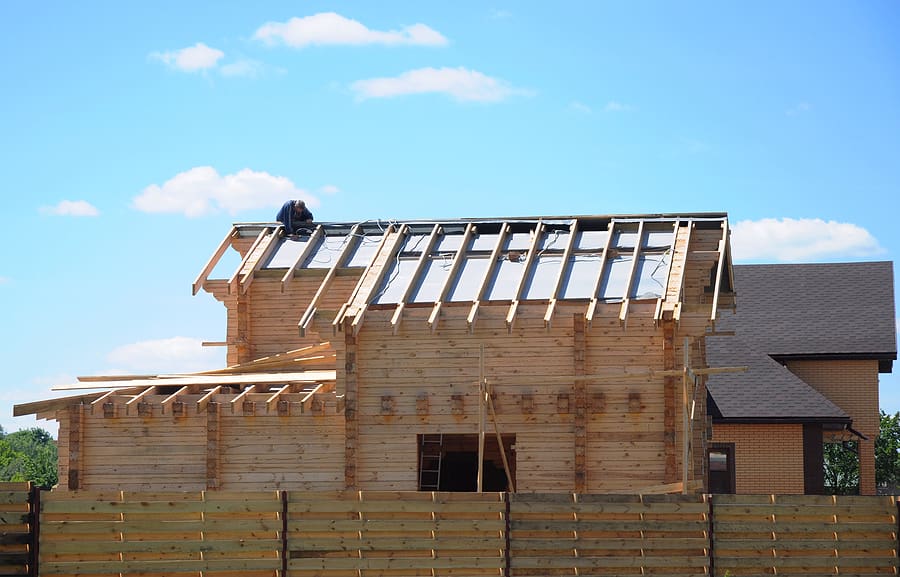Your roof is one of the most important parts of your home—it protects your family, belongings, and the integrity of your entire house. But like everything else, roofs don’t last forever. Whether it’s everyday wear and tear, storm damage, or simply the natural aging process of your roofing materials, there will come a point when repairs no longer cut it and it’s time to replace. Knowing how often to replace a roof—and recognizing the signs your roof is due—can save you thousands of dollars in water damage and keep your home safe for decades to come.
How Long Does a Roof Typically Last?

The life expectancy of your roof depends heavily on the type of roofing materials, the climate where you live, and how well your roof was installed and maintained.
- Asphalt shingles (the most common roofing material): Usually last 15–30 years. If your roof is reaching the 20 years mark, it’s often time to start planning for replacement.
- Wood shakes/shingles: Average 20–40 years, but they require more maintenance.
- Metal roofs: Durable, often lasting 40–70 years.
- Clay or concrete tile: Can exceed 50 years, though the roof deck beneath may need repair sooner.
- Slate roofs: Among the longest lasting, with a life expectancy of 75–100 years when properly maintained.
If your asphalt shingles roof is approaching 15 years or more, or you’ve lived in your home for decades without replacing, it’s smart to have a roofing contractor inspect it—even if you don’t see obvious problems.
Signs It’s Time to Replace Your Roof
Not every issue requires a full roof replacement. Sometimes roof repair can buy you more time. But there are clear warning signs your roof has reached the end of its service life.
1. Age of the Roof
- If your roof was installed 15–20 years ago, it’s likely nearing the end of its life expectancy.
- Even if it looks okay from the ground, hidden damage to your roof deck or underlayment may be waiting to show itself.
2. Leaks and Water Damage
- A leaky roof is one of the most obvious signals.
- Water stains on ceilings or walls, musty odors, or visible mold growth inside your home mean water damage has already started.
3. Shingle Problems
- Curling, cracking, or missing shingles are a classic sign your roof is deteriorating.
- Asphalt shingles with granule loss (you’ll see sand-like material in your gutters) indicate wear and tear.
4. Storm Damage
- High winds, hail, or falling branches can cause major damage to your roof.
- Even a small part of the roof being compromised can affect the integrity of your roof system.
5. Sagging Roof Deck
- A sagging roofline is a serious problem and often means structural issues with the roof deck. This usually requires immediate repairs or replacement.
6. Frequent Repairs
- If you’re calling for roof repair multiple times a year, it may be more cost-effective to invest in a full replacement instead of patching the same issues.
Factors That Affect How Often to Replace a Roof
Every roof is unique, but these factors influence whether you’ll need repairs or replacements sooner rather than later:
- Climate and Weather: Areas prone to heavy storms, snow, or extreme heat cause faster wear and tear.
- Ventilation: Poor attic ventilation can shorten the life of your roof by allowing heat and moisture to damage materials.
- Roofing Materials: Higher-quality shingles and proper installation extend the life of your roof.
- Maintenance: Regular inspections and small repairs can help prevent larger damage to your roof.
Roof Repair vs. Roof Replacement

Many homeowners wonder if a roof repair will suffice or if a full replacement is necessary. A roofing contractor will often weigh the following:
- Extent of Damage: Small leaks, a few missing shingles, or minor flashing issues may only need repairs.
- Age of the Roof: If the roof is over 20 years old, replacement is often the smarter investment.
- Integrity of the Roof: Damage to the roof deck or widespread shingle deterioration makes repairs less effective.
Protecting the Integrity of Your Roof
Your roof is more than just shingles. A properly installed roof is a system that includes underlayment, flashing, ventilation, and the roof deck. Once one part of the roof system fails, other components are at risk.
To protect the integrity of your roof:
- Schedule annual inspections with a trusted roofing contractor.
- Address minor repairs quickly before they become major.
- Clear gutters regularly to prevent water backup.
- After major storms, have your roof inspected for hidden storm damage.
Your roof isn’t something you want to gamble with. Waiting too long can lead to water damage, costly structural issues, and even reduced home value. While asphalt shingles may last 15–20 years, it’s important to remember that every roof ages differently. By recognizing the signs your roof is due, scheduling inspections, and working with an experienced roofing contractor, you can protect your investment and keep your home safe.
If you suspect it’s time to replace your roof—or you just want peace of mind—Roof Dudes is here to help. With years of experience and a commitment to quality, we’ll inspect your roof, explain your options, and guide you through repairs or replacements so your home stays protected for years to come.
